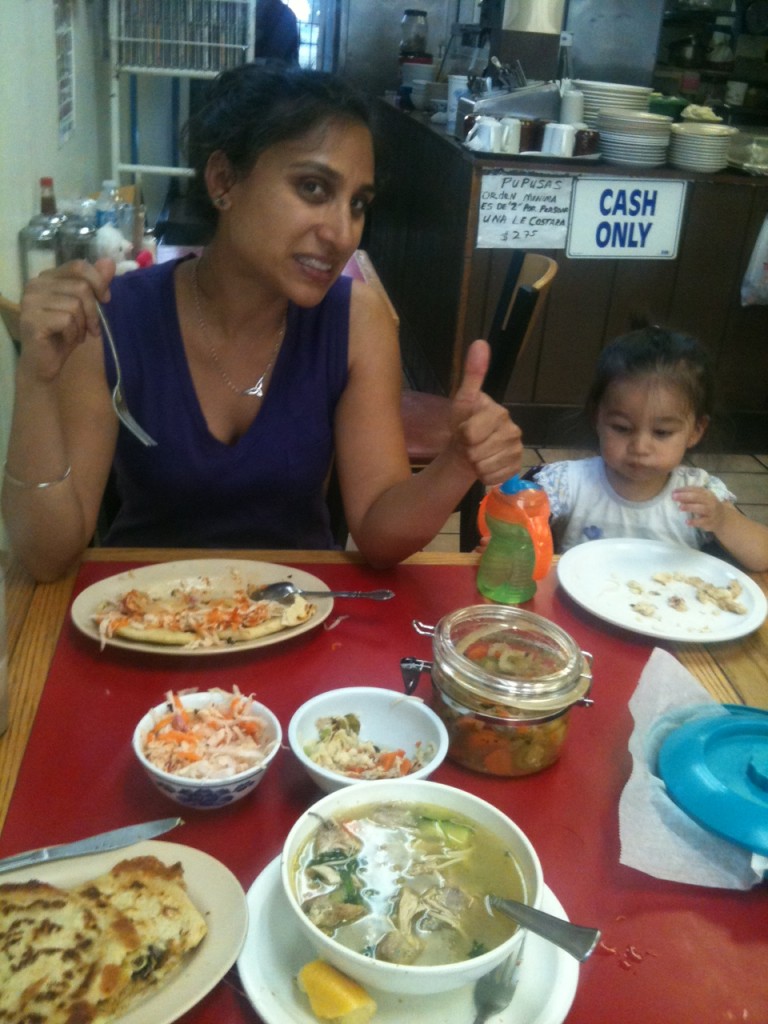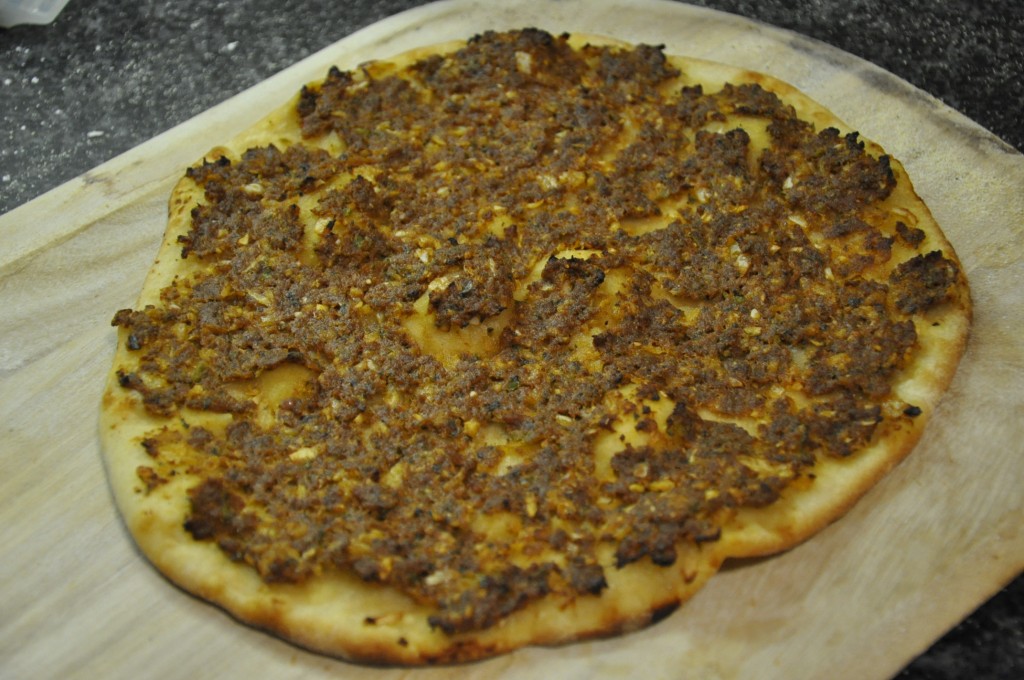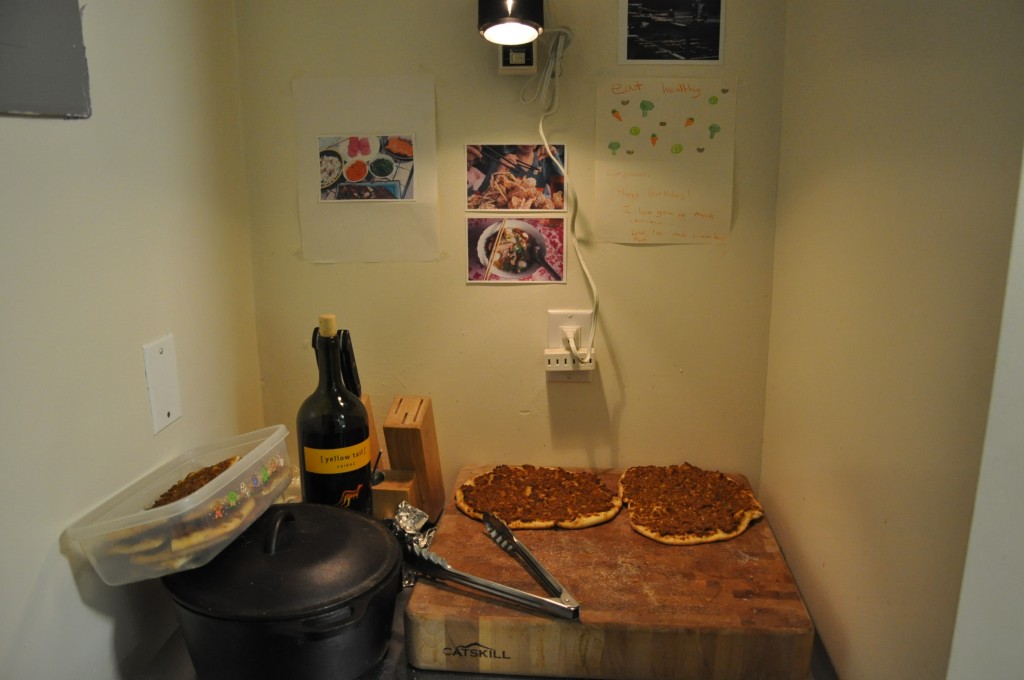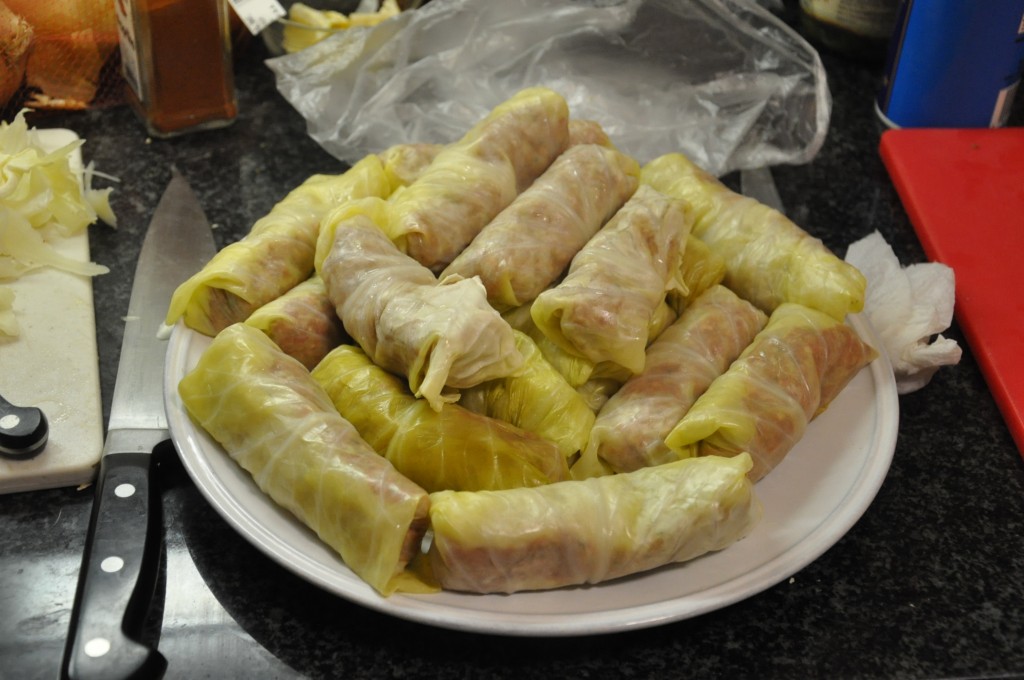Pupusa. Just say it. “Pupusa”. I don’t know if onomatopoeia would quite qualify in this instance, but doesn’t the word “pupusa” just sound like something bursting with savory goodness? Indeed these Salvadorean treats rank up there with some of my favorite foods for a number of reasons. Basically they’re fat tortillas (corn usually) stuffed with any number of ingredients (beans, cheese, pork or chicken, a even flowers –loroco) and fried on a griddle so the outside becomes nicely browned and crisp while the inside corn meal and fillings remain soft and moist, like a tamale. The best part is when a bit of the cheesy insides ooze out onto the hot the griddle and add another layer of delicious crispy crust to the pupusa. They’re then served with a tomato-y hot sauce and a nice vinegary cabbage and carrot slaw, the acid of the sauce and salad perfectly complementing the rich savoriness of the pupusas. They are supremely satisfying both to the palate and the stomach. They will fill you up.
My first taste of pupusas was not in El Salvador but in Guatemala, when I was a young lad many many years ago doing the young lad backpacker thing down in Central America. I was studying Spanish in Quetzaltenango and one day I was searching for a late afternoon snack in the parque central . I sampled a pupusa (not even that fresh of the griddle) from one of the food venders who’d set up shop. Mind blown. And then when I crossed over into El Salvador and encountered more and different varieties of pupusas, what was left of my mind was blown further. Living in SF – still as a young lad – I was ecstatic to find that I could find fresh and delicious pupusas at such favorites as Panchitas and El Zocolo.
But eight years living in NYC, meant a long hiatus from great pupusas. Sure, I could occasionally get some good ones at the Red Hook Ball fields (at least before they became over run by hipster foodies), but there were few Salvadorean restaurants that I was aware of where I could indulge to my heart’s content. Then a few months ago, we moved back to the Bay Area and I’ve been reunited with delectible pupusas once again. We live in Oakland, just a stone’s throw away (or a nice bike ride) from Los Cocos, one of the sole Salvadorean restaurant in the Fruitvale district, a neighborhood where Mexican taquerias predominate (not a bad thing, just stating a fact). I first ate at Los Cocos years ago with my friend Matt and when we feasted on pupusas and incredibly flavorful caldo de pollo (chicken soup). So, it was a real joy to bring Shef and K to this spot a couple months ago when we were newly arrived to Oakland. It was just as I had remembered it – decorated with Salvadorean tchotchkes, the air inside hazy with cooking grease. In other words, perfect. K got her first taste of pupusas and it’s fair to say, she loved them.
Eating at Los Cocos (with Matt again) a few weeks later, I asked Rosa the cook and owner of the restaurant if I could make a short vid of her cooking pupusas process. She said, “sure!” So, this is the result. Please enjoy and go find pupusas near to you because this vid will make you hungry.









